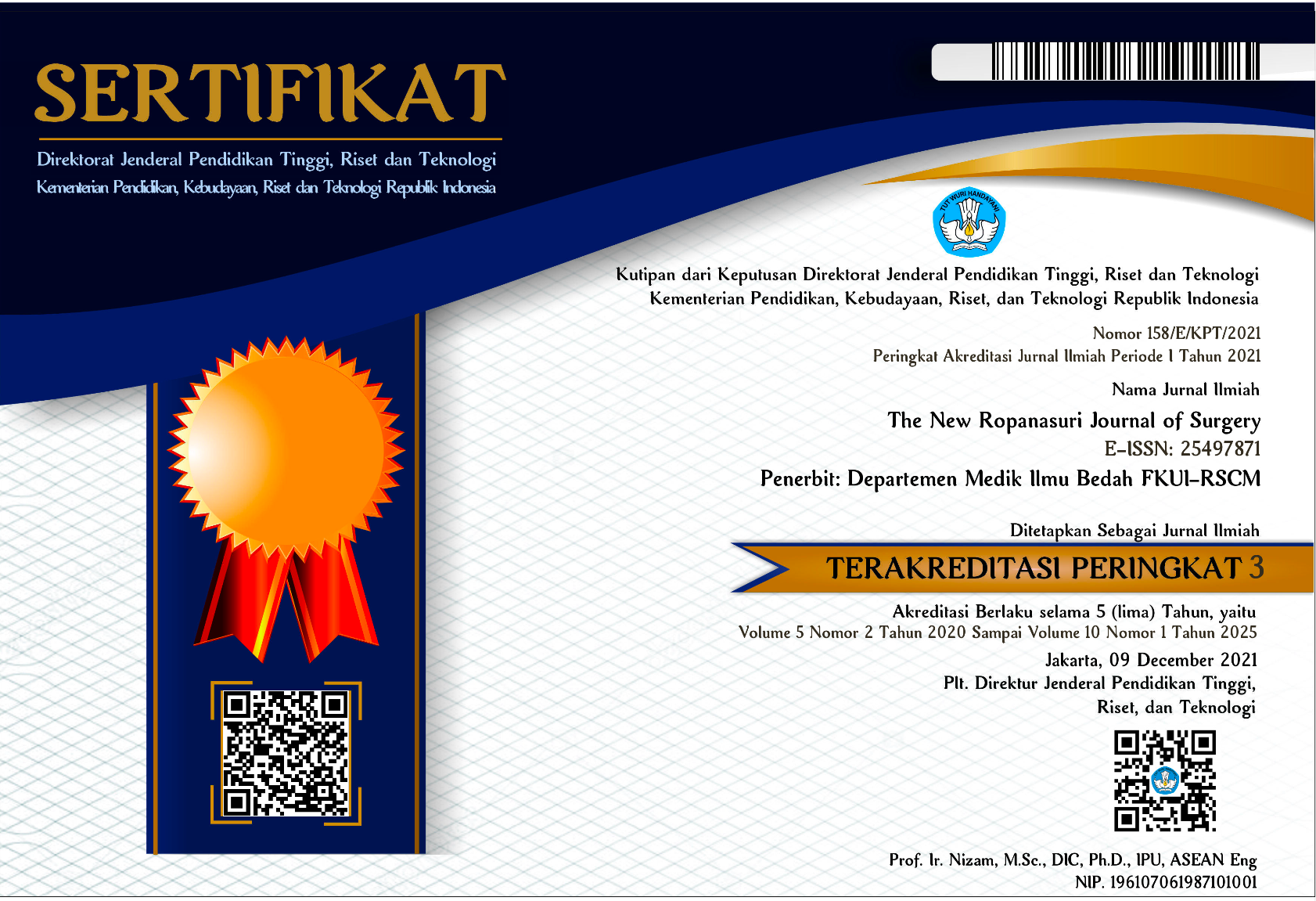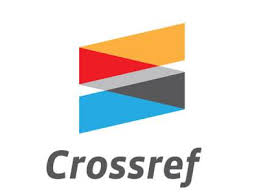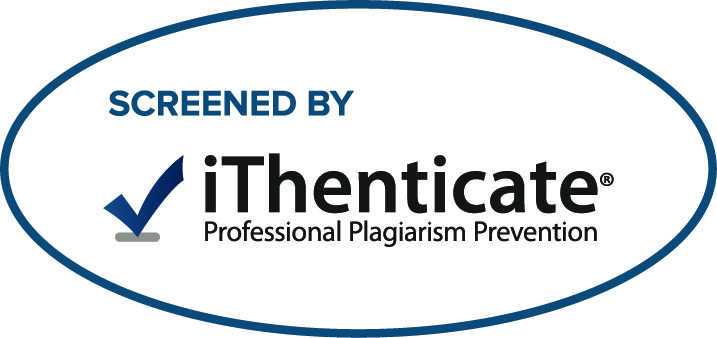Abstract
Introduction. Laparoscopic cholecystectomy has become a standard treatment for symptomatic cholecystolithiasis in dr. Cipto Mangunkusumo Hospital (RSCM). This study aims as a preliminary study to externally validate the 10-point intraoperative gallbladder scoring system (G10), an assessment system of laparoscopic cholecystectomy's difficulty.
Method. A cross-sectional study was carried out. Enrolling subjects who underwent laparoscopic cholecystectomy from January 2019 to December 2019. Data of the subjects were collected from medical records. We assessed each of the subjects' G10 scores and operation techniques based on the intraoperative images and surgical reports. The surgical technique divided into two groups, those are the Critical View of Safety (CVS) technique and bailout procedure group, consisting of fundus–first cholecystectomy, subtotal cholecystectomy, and conversion. The correlation of G10 score between CVS and bailout was analysed using the Mann-Whitney nonparametric test. A Kendall's tau was performed to measure the correlation between the G10 score and the bailout procedure. Statistical power was calculated by G-power application. A ROC test was performed to calculate the sensitivity and specificity of the G10 scoring system to predict bailout procedure, then the cut-off value was determined.
Results. There was a significant and positive correlation between the G10 score with the bailout procedure (2 indicate subjects at high risk of bailout procedure (72.2% vs. 20.98%).
Conclusion: This study showed that the G10 score has good accuracy in predicting a bailout procedure. The use of G10 scores intraoperatively is "essential" to provide valid and objective assessment in determining the difficulty of surgery. When the G10 score is 1 or 2, it's safe to perform the CVS technique. Whereas, if the G10 score is three or greater, surgeon should consider bailout procedure.
Recommended Citation
Mazni, Yarman; Jeo, Wifanto Saditya; and -, Rony
(2020)
"External Validation Of 10 Points Intraoperative Gallbladder Scoring System (G10) In Laparoscopic Cholecystectomy at RSUPN dr. Cipto Mangunkusumo,"
The New Ropanasuri Journal of Surgery: Vol. 5:
No.
2, Article 3.
DOI: 10.7454/nrjs.v5i2.1068
Available at:
https://scholarhub.ui.ac.id/nrjs/vol5/iss2/3














